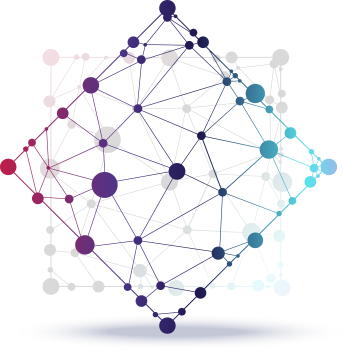- Reshaping the Narrative: Critical news insights and the forces defining our world.
- The Evolution of News Consumption
- The Impact of Social Media
- Algorithmic Bias and its Consequences
- The Rise of Misinformation and Disinformation
- The Role of Deepfakes and Synthetic Media
- Building a More Informed Future
Reshaping the Narrative: Critical news insights and the forces defining our world.
In an era defined by instant information and global interconnectedness, the landscape of how we receive and interpret events is undergoing a profound transformation. The sheer volume of information available, coupled with the rise of digital platforms, presents both opportunities and challenges. Critical analysis of information, discerning fact from fiction, and understanding the underlying forces shaping the narrative are more crucial than ever. Current events, or simply news, play a vital role in our societal understanding and individual decision-making.
The modern news cycle is characterized by its relentless speed and 24/7 accessibility. This constant stream of updates, while offering immediacy, can also lead to superficial engagement and a lack of in-depth understanding. Therefore, a discerning approach to consuming information is paramount. It’s essential to evaluate sources, consider multiple perspectives, and be aware of potential biases.
The Evolution of News Consumption
Historically, news dissemination was largely controlled by a limited number of established media outlets. Gatekeepers carefully curated information before it reached the public. This system, while not without its flaws, provided a degree of quality control and editorial oversight. However, the advent of the internet and social media has drastically altered this dynamic. Now, anyone with an internet connection can create and share information, bypassing traditional journalistic standards and procedures. This democratization of information has its benefits, giving voice to previously marginalized perspectives, but also exacerbates the risk of misinformation and the spread of false narratives.
| Limited sources | Unlimited sources |
| Gatekeepers & Editorial Control | Decentralized & Minimal Control |
| Slower Dissemination | Instantaneous Dissemination |
| Higher Production Costs | Lower Production Costs |
The Impact of Social Media
Social media platforms have become major conduits for information, often serving as the primary source of news for many individuals. Algorithms curate personalized news feeds, showcasing content based on user preferences and engagement. While this personalization can enhance user experience, it also creates “filter bubbles” and “echo chambers,” where individuals are primarily exposed to information that confirms their existing beliefs. This limits exposure to diverse perspectives and can contribute to political polarization and societal division. Understanding how these algorithms function and actively seeking out opposing viewpoints are vital steps toward a more informed and nuanced understanding of the world.
Algorithmic Bias and its Consequences
The algorithms that govern social media platforms are not neutral; they are designed to maximize engagement, often prioritizing sensational or emotionally charged content. This can inadvertently amplify misinformation and extremist viewpoints, particularly when those items elicit strong emotional responses. Moreover, algorithmic biases – often unintended – can perpetuate existing societal inequalities. For example, algorithms may disproportionately flag content from marginalized communities as “spam” or “low quality,” further silencing their voices. To counteract these effects, greater transparency and accountability are needed from social media companies, along with media literacy education for users. Developing critical thinking skills and understanding how algorithms shape our information environments are essential for navigating the digital landscape.
- Algorithms prioritize engagement over accuracy.
- Filter bubbles limit exposure to diverse perspectives.
- Bias can perpetuate societal inequalities.
- Increased scrutiny and accountability of tech companies is needed.
The Rise of Misinformation and Disinformation
The proliferation of misinformation – false or inaccurate information – and disinformation – deliberately misleading or biased information – poses a significant threat to democratic societies. These fabricated narratives can manipulate public opinion, undermine trust in institutions, and even incite violence. The speed and scale at which misinformation can spread online makes it particularly difficult to combat. Traditional fact-checking initiatives, while valuable, often struggle to keep pace with the constant stream of new false claims. Additionally, factors such as the inherent biases of how we interpret any information plus the willingness to selectively believe messages that align with pre-existing beliefs further contribute to the problem. Combating this requires a multifaceted approach encompassing media literacy education, technological solutions (like AI-powered fact-checking), and enhanced cooperation between governments, media organizations, and social media platforms.
The Role of Deepfakes and Synthetic Media
The emergence of deepfakes and other forms of synthetic media presents a particularly insidious form of disinformation. Deepfakes – hyperrealistic video or audio manipulations – can create convincing but entirely fabricated representations of individuals saying or doing things they never actually did. These technologies pose a serious threat to individuals’ reputations, political discourse, and national security. Distinguishing deepfakes from genuine content is becoming increasingly challenging, even for experts. Detecting this type of manipulation will require advanced forensic techniques and a more skeptical approach to consuming visual and audio information. It also necessitates the development of tools and technologies to authenticate media and verify its origins. The potential for abuse is substantial, making this one of the most pressing challenges facing the information ecosystem today.
- Deepfakes create convincing but false representations.
- Visual and audio forensic techniques are needed for detection.
- Media authentication is crucial.
- The potential for abusing this technology is a serious risk.
Building a More Informed Future
Addressing the challenges facing the information environment requires a collective effort. Individuals must cultivate critical thinking skills, evaluate sources carefully, and be wary of sensational or emotionally charged content. Media organizations have a responsibility to uphold journalistic integrity, prioritize accuracy, and provide in-depth reporting. Social media platforms must enhance their efforts to combat misinformation, increase transparency about their algorithms, and promote media literacy among their users. Education concerning critical assessment of information should be integrated into school curricula. Governments can also play a role by supporting independent journalism, funding media literacy programs, and holding social media companies accountable for the spread of harmful content.
| Individuals | Critical thinking & Source evaluation |
| Media Organizations | Journalistic Integrity & Accurate Reporting |
| Social Media Platforms | Combatting Misinformation & Algorithm Transparency |
| Governments | Supporting Journalism & Funding Media Literacy |
Navigating today’s complex information landscape requires vigilance, skepticism, and a commitment to seeking out diverse perspectives. By fostering a more informed and engaged citizenry, we can build a more resilient and democratic society. The ability to effectively process and understand the flow of information is no longer simply a matter of personal empowerment; it is a fundamental requirement for preserving the health of our democratic institutions and ensuring a future founded on truth and understanding.



